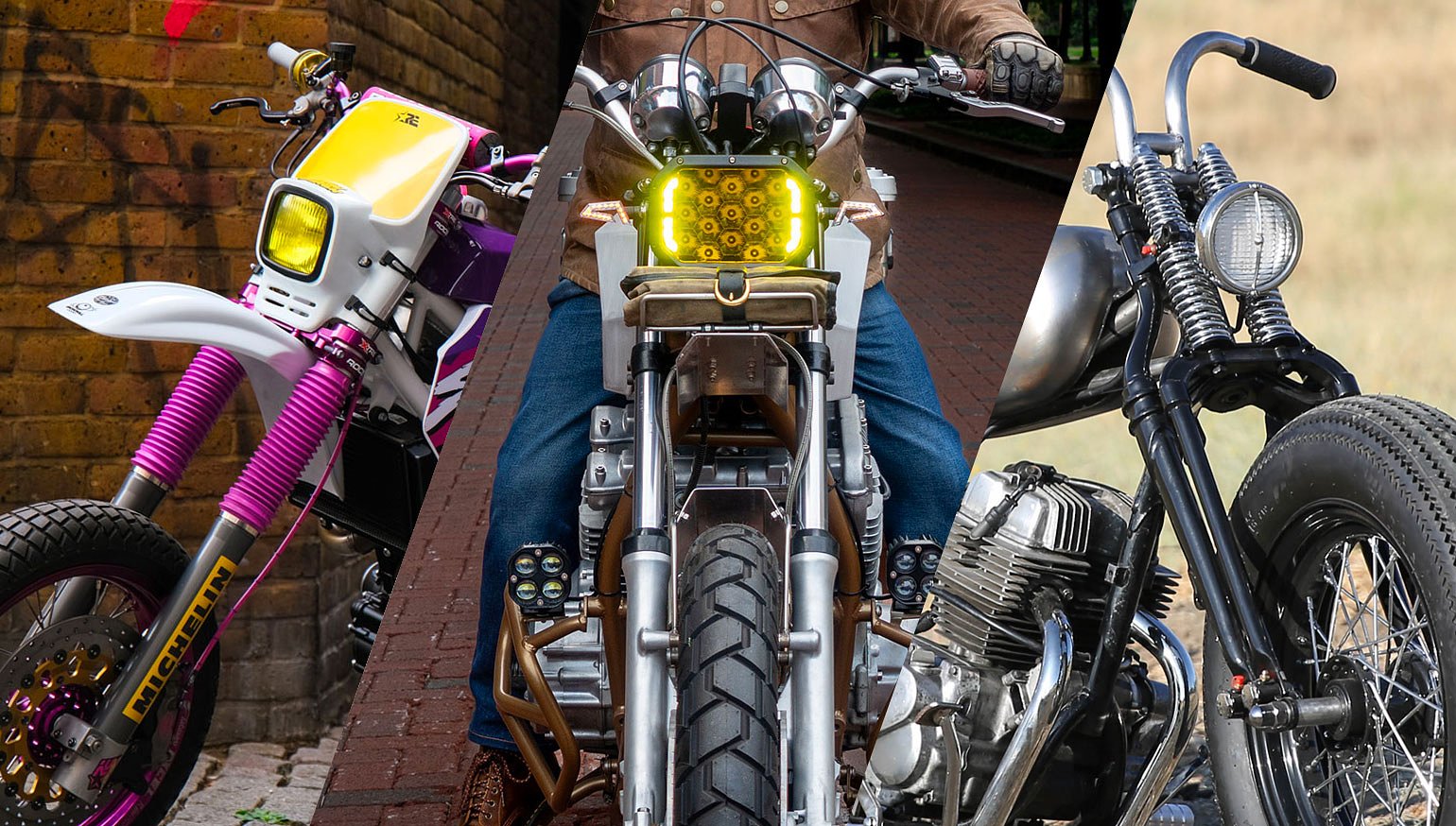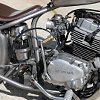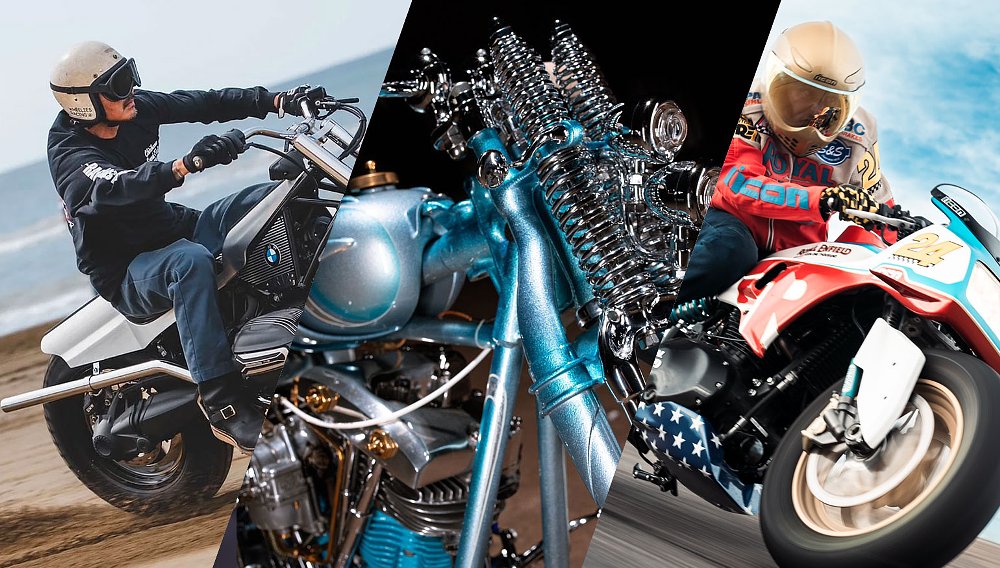This month's trio of custom motorcycles couldn't be more different. LNSPLTBLVD's Honda Rebel is a raw tribute to the past, Mifune Werx's Yamaha XS750 showcases the precision and artistry of Japanese origami, and Sticky's Speed Shop's Royal Enfield Guerilla 450 is an unapologetic exhibition of color and style.
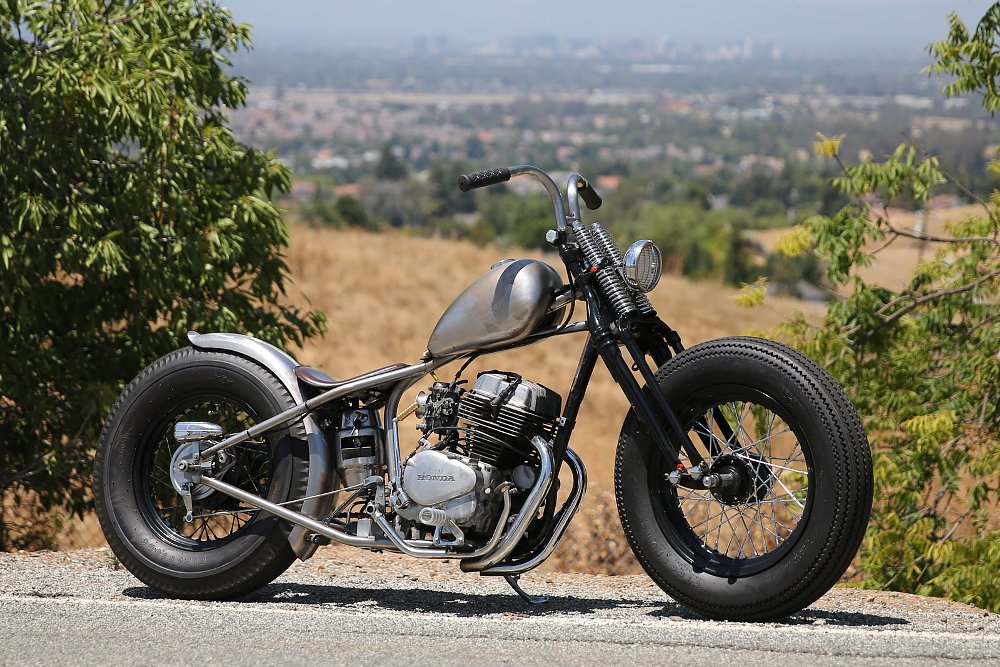
LNSPLTBLVD Honda Rebel Chop
Son Mai, aka LNSPLTBLVD, is a "self-taught" custom automotive builder based in San Jose, California. "I've always been particular about details, and I truly enjoy bringing my own vision to life through each build," he says. His skill set and trademark raw, unpolished style are the result of this obsession, and he's not afraid to apply it to some rather unexpected subjects. Case in point, this Honda Rebel 250-based bobber.
"A lot of people ask why I'd pour so much time and money into such a small bike, and my answer is always the same: Why not?" says Son. But there's more to this story than simply that. His choice to customize the modest 250 Honda comes from a place of nostalgia. "A Honda Rebel 250 was actually my very first motorcycle. Back in 2011, when I was living in San Francisco, I bought one just to commute to school," he recalls. More than a decade later, he's come full circle, turning a simple commuter into a stripped-down tribute to where his love of motorcycles began.
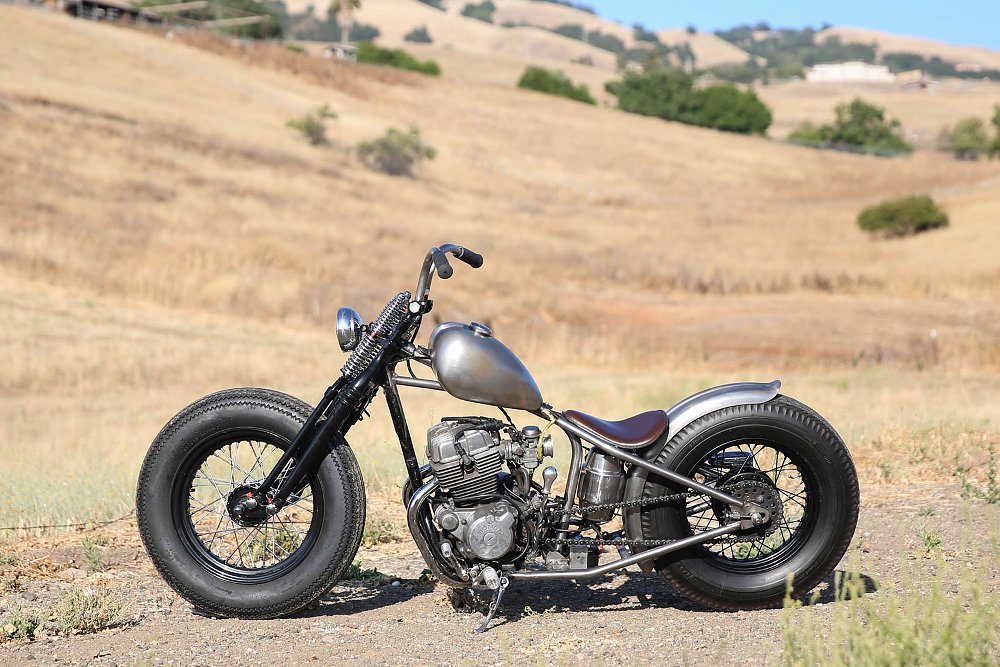
After tearing down his bone-stock Honda Rebel, Son fired up the grinder and went to work on the frame. When he was done, the entire rear half had been replaced with a weld-on hardtail from VooDoo Vintage, giving the little Honda a rigid stance. Up front, the factory fork has been replaced by a Harley-Davidson Springer setup, which Son machined to slot into the neck of the Rebel's chassis. To match the old-school vibe, he also performed a jockey shift conversion. This sees the clutch operated by a foot pedal, and gear changes taking place through a hand-twisted metal shifter, both of which were designed and fabricated by Son himself.
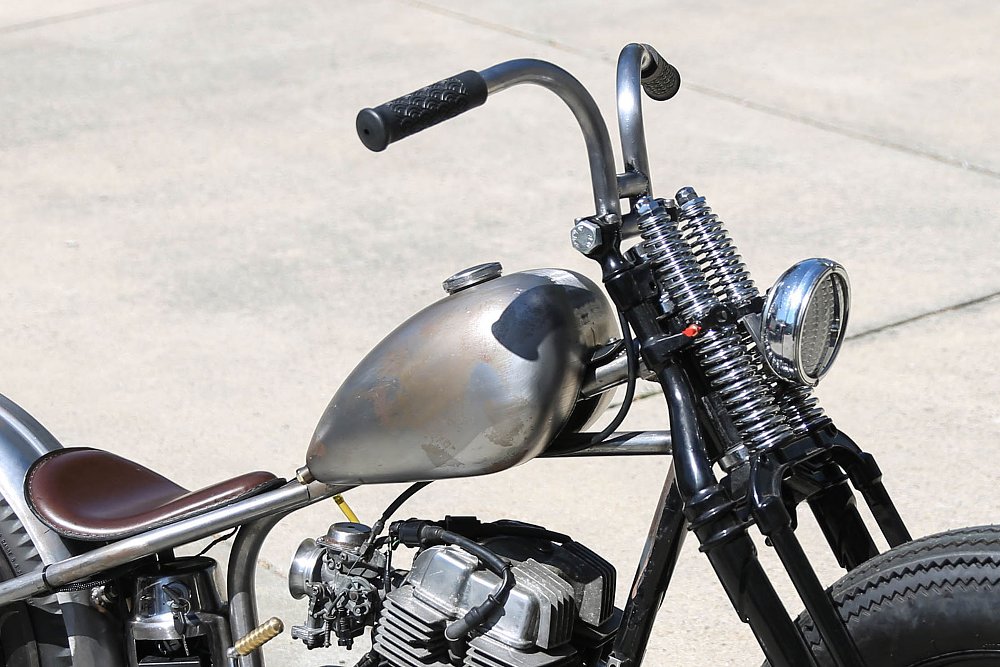
From the get-go, Son knew he wanted to retain the Rebel's slim profile, but in keeping with its new styling, wanted it to appear less delicate. The solution was to beef things up with chunkier rubber. "A small bike with oversized rubber looks tough instead of fragile. They give it presence," he says. The new arrangement includes a Firestone Coker 5.00-16 up front and a 560-15 car tire out back. Getting the wheels to sit right in the frame required a handful of spacers and axle plates, which Son fabricated himself. Finishing off the rear end is a Sting Ray fender from Lowbrow Customs and a seat that Son scored at a swap meet.
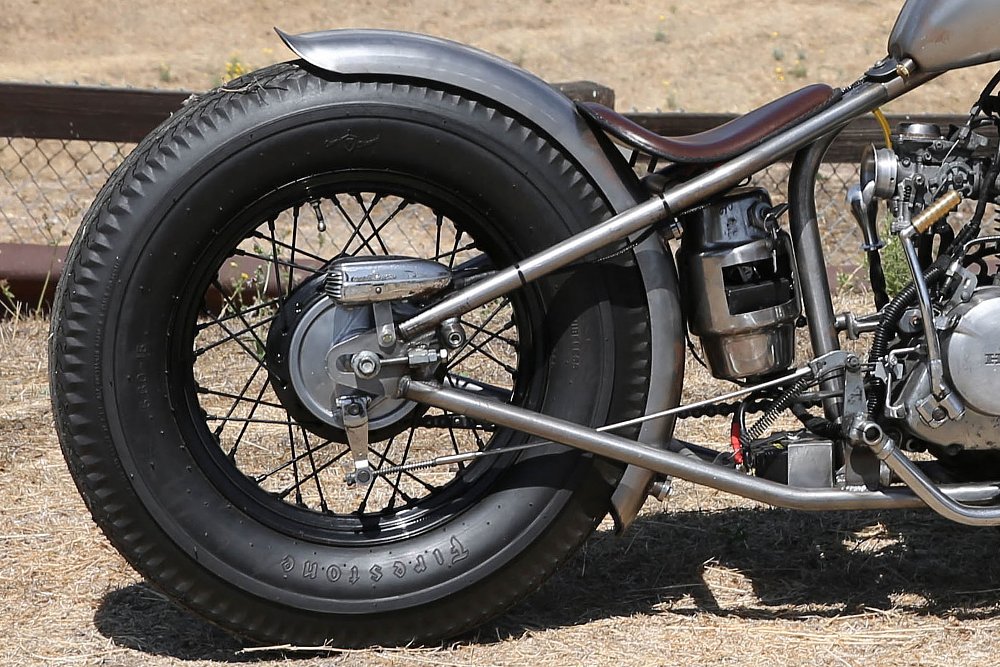
To complete the Rebel's new look, Son added a mix of aftermarket and hand-fabricated parts. The Wassel-style fuel tank comes straight out of Lowbrow Customs' catalog, while the handlebar is Son's own creation, bent to mimic the look of vintage Schwinn bicycle bars. And to keep things clean, he's running a Kustom Tech internal throttle and a set of his own LNSPLT grips.
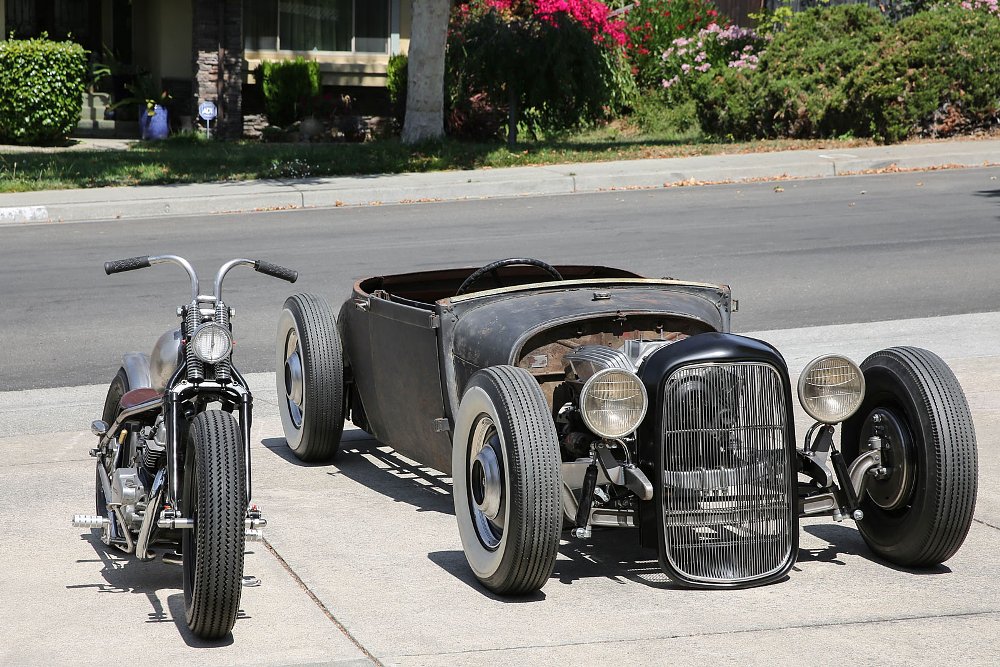
Beneath the seat is another swap-meet find, an electronics box that houses the simplified wiring and an Antigravity battery. The bike still fires up with an electric starter, but in true old-school fashion, Son added a custom-fitted kickstarter. Out back, the horn from a Japanese bicycle has been cleverly repurposed to form the taillight.
Although it's already on the road, Son admits there are still a few final touches to come. But even as it sits now, this Rebel feels every bit as defiant as its name suggests.
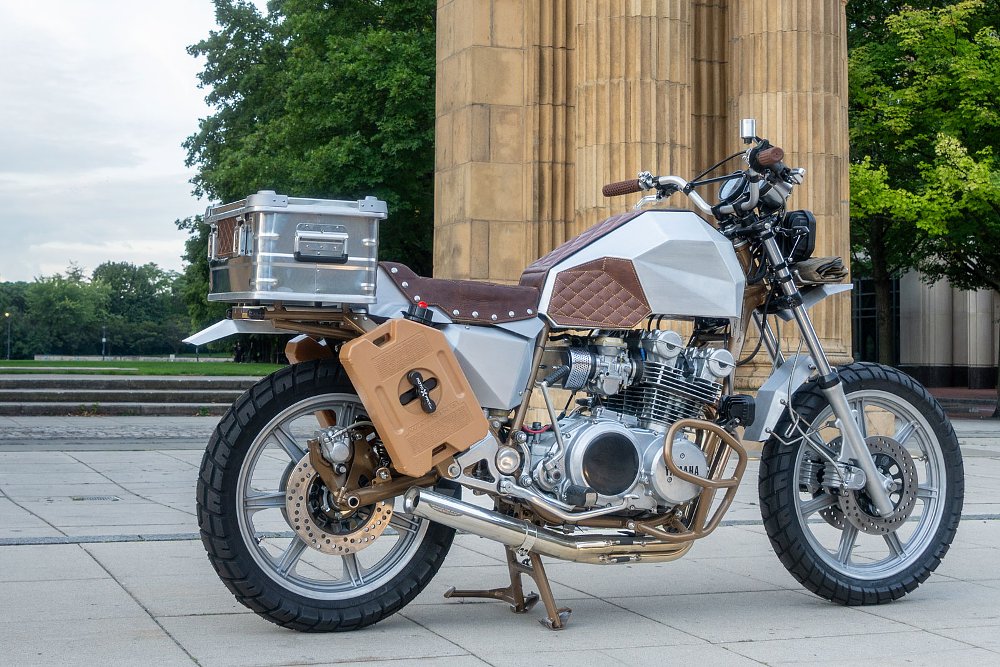
Mifune Werx XS750 Desert Sled
Landscape architect Brent King is the definition of an overachiever. He runs his own design firm, teaches martial arts, practices swordsmanship, builds replica English and Japanese armor, and somehow still finds time to build the occasional custom motorcycle. Working under the name Mifune Werx, Brent draws on his skills in 3D design and metal fabrication to create truly one-of-a-kind machines, each infused with design cues from his varied passions.
This bike, dubbed the Mifune Werx Origami Desert Sled, began life as a 1977 Yamaha XS750, but under Brent's skilled hand, it's been transformed into something entirely different.
"The bike actually came from an old college friend of my wife," Brent explains. "He had dismantled the bike in preparation for a resto-mod, and after about eight years in the garage, concluded that it just wasn't going to get finished."
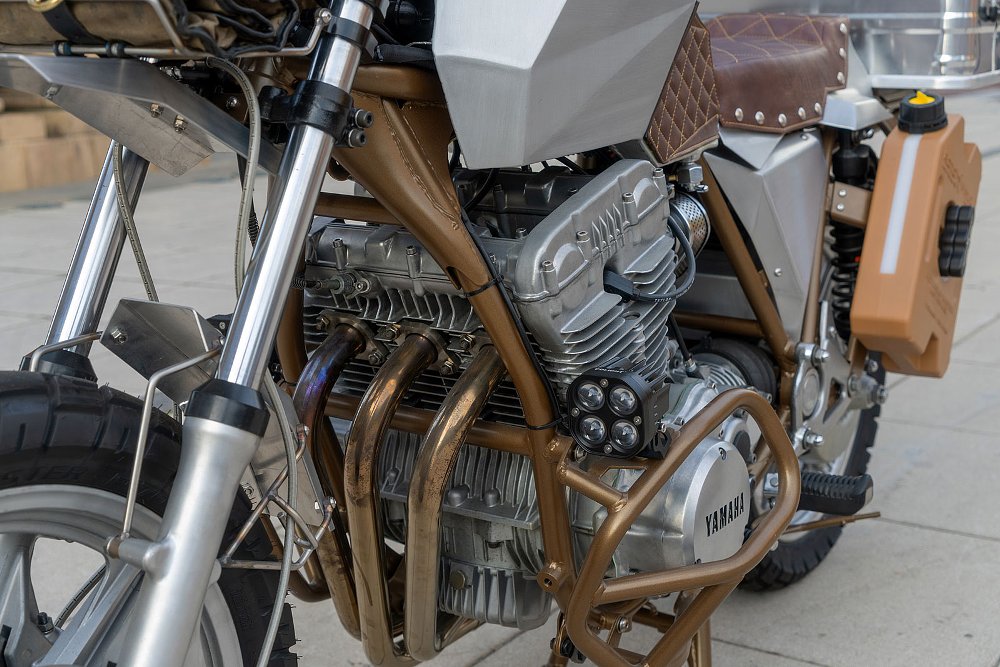
At first, Brent had no interest in building another Japanese bike. "I had already done a couple of KZ650s, and I had just finished Asohka, a '73 Norton, and that bike had been received very well, so I was thinking of focusing on Triumphs and Nortons." But after learning of the XS750's lauded triple-cylinder engine and bulletproof shaft drive, he decided to give it a go.
Inspired by the proportions of BMW's Dakar-winning R80 G/S, Brent decided the best course of action for the XS750 was to build a shaft-driven scrambler. But, as the build progressed, things took an unexpected turn. "I started playing with tank proportions. I usually work in cardboard, and was initially going to just replicate a GS tank. But after several mockups, I stumbled onto a fantastic origami approach that really got me excited about the build."
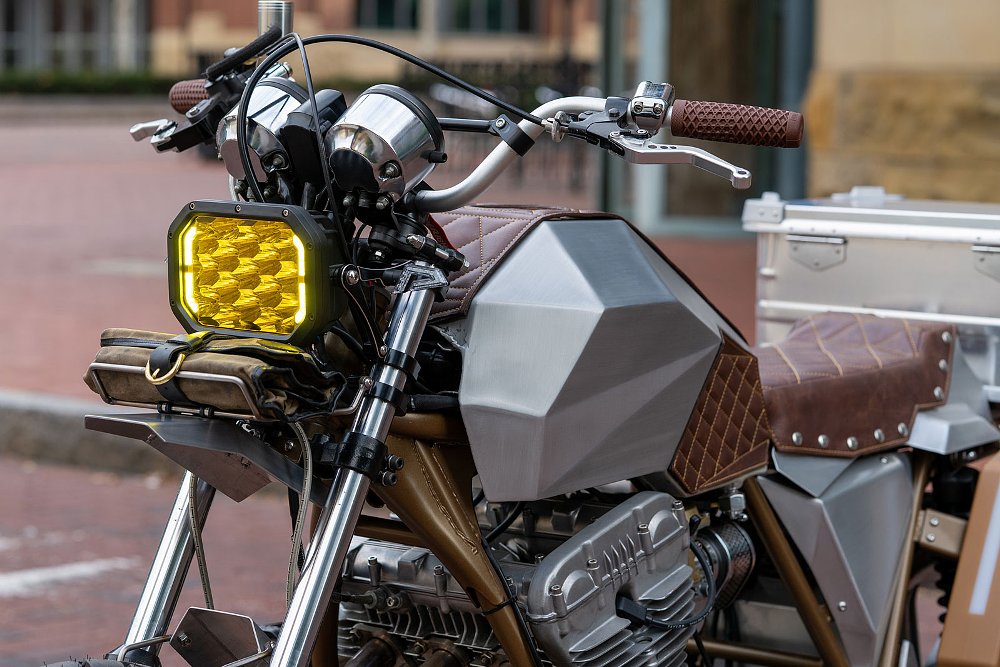
It's been said, "Nothing worthwhile is easy," and Brent can attest to that with his origami-inspired design. After building a dozen or so cardboard mockups, he settled on a design that minimized visual clutter. He then cut each panel from sheet metal, tack-welded them into place, ensuring correct alignment, laid down the final welds while managing warping from the heat, and finished by sanding and grinding every seam to mimic the crisp folds of paper.
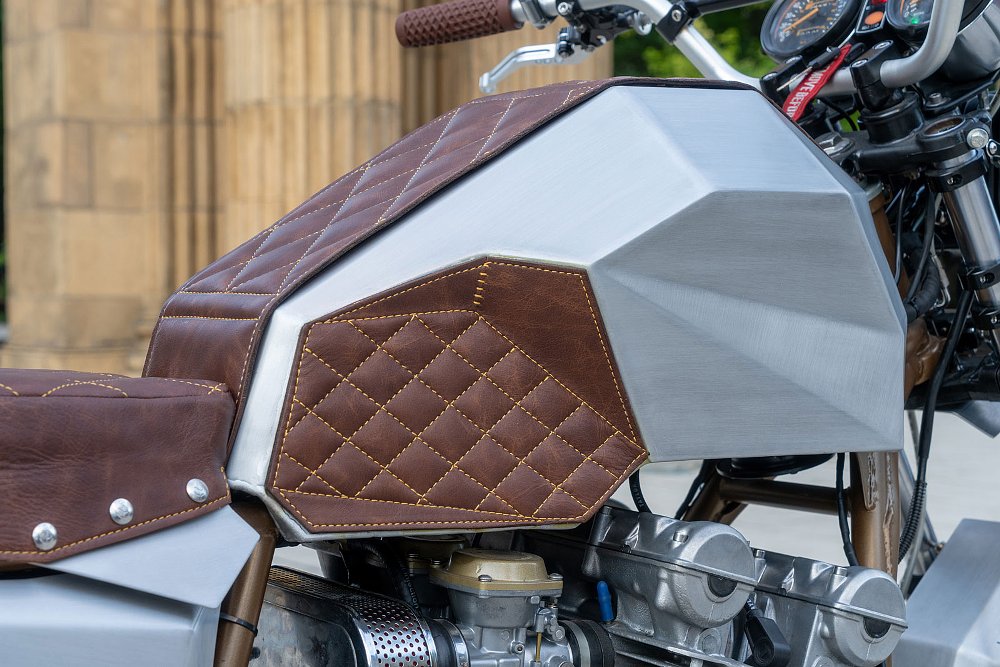
Along with the radical new bodywork, this XS750 boasts a veritable laundry list of modifications. These include a complete rewire, fitment of a Motogadget M-unit, an electronic ignition system, and a full carburetor overhaul tuned to match a free-flowing intake and Delkevic three-into-one exhaust system. The modernized lighting includes an LED headlight and turn signals, frame-mounted auxiliary side lights, and a custom-made acrylic rear tail light built into the luggage rack. For balanced performance on and off the road, the wheels wear Shinko E-705 Trailmasters, while Fox adjustable shocks add an extra inch of lift to the rear. And to make sure the nearly 50-year-old engine delivers on its promise, Brent performed a thorough internal overhaul.
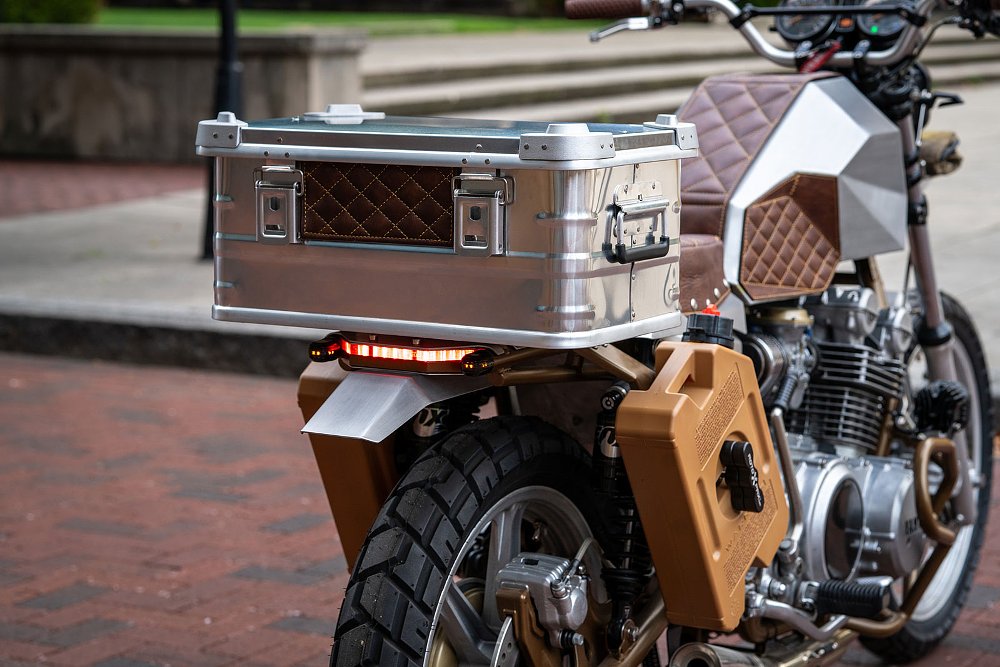
Staying true to the scrambler theme, Brent has added a few purposeful touring touches. "I didn't want to get too apocalyptic," he jokes, "but I see all these remote bike trips needing additional water and fuel to complete the journey, so I mounted RotoPax containers on each side." To manage the extra weight on the chassis from the RotoPax and a top box, he reinforced the frame. A split front fender and crash bars around the engine cases round out the bike's rugged, utilitarian stance.
Finally, Brent experimented with different finishes on the aluminum bodywork, settling on a wet-sanded finish under a clear matte coat. The leather saddle and tank protection are Brent's handiwork too, showcasing the same precision and pride that define every Mifune Werx build. It's a finish that speaks volumes, the kind you only get from a builder who refuses to cut corners.
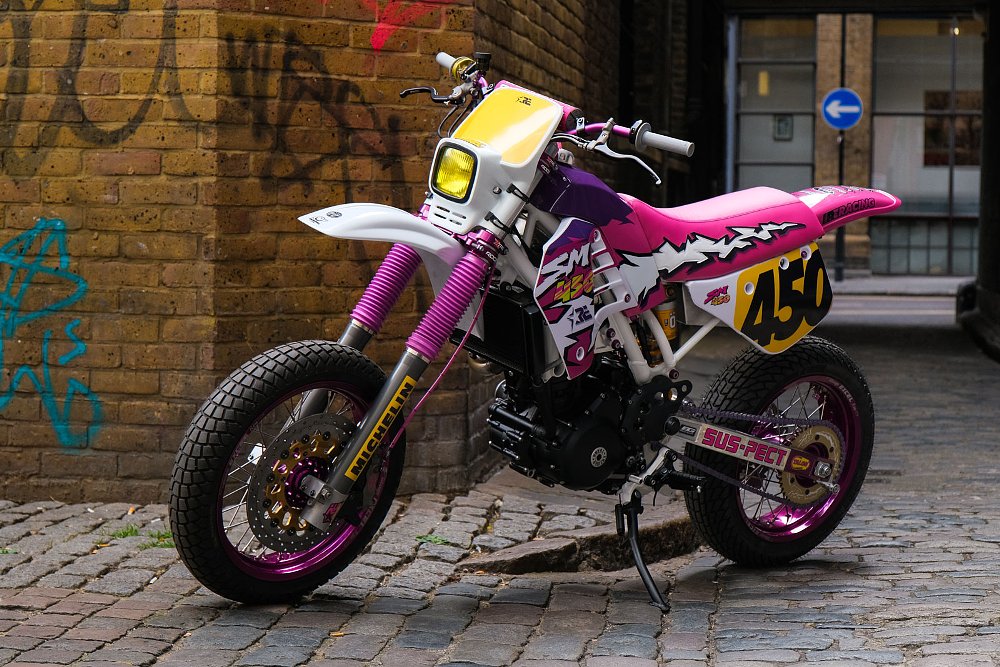
Sticky's Speed Shop Urban Guerilla 450
Subtle isn't a word you'll find in Matt Coulter's vocabulary. He founded Sticky's Speed Shop, a custom motorcycle workshop with a penchant for vibrant colors, wild graphics, and early '90s four-cylinder sport bikes. His latest project was built using the same formula, aside from one small difference: It's based on a modern Royal Enfield thumper.
The Indian manufacturer sought someone who could give its Guerilla 450 roadster a distinctive custom twist. After seeing Sticky's Speed Shop's previous work, they knew Matt was the man for the job. When Enfield came knocking, Matt eagerly accepted the opportunity to take on his first collaboration with a manufacturer and invited his good friend, artist, and illustrator, Ryan Roadkill, along for the ride.

"The idea we came up with was a teenage wet dream, an early-'90s supermoto from an era me and Ryan can sometimes get stuck in, but that also reflects our style," explains Matt. "The inspiration came from memories of the fluoro race bikes we saw in magazines, and the early days of freestyle motocross films on imported VHS tapes."
From the get-go, Matt approached this project as more than just a styling overhaul. He wanted his supermoto homage to have the performance to match. Achieving that meant some big changes to the Guerrilla's handling characteristics, which could only be achieved with a complete suspension overhaul.
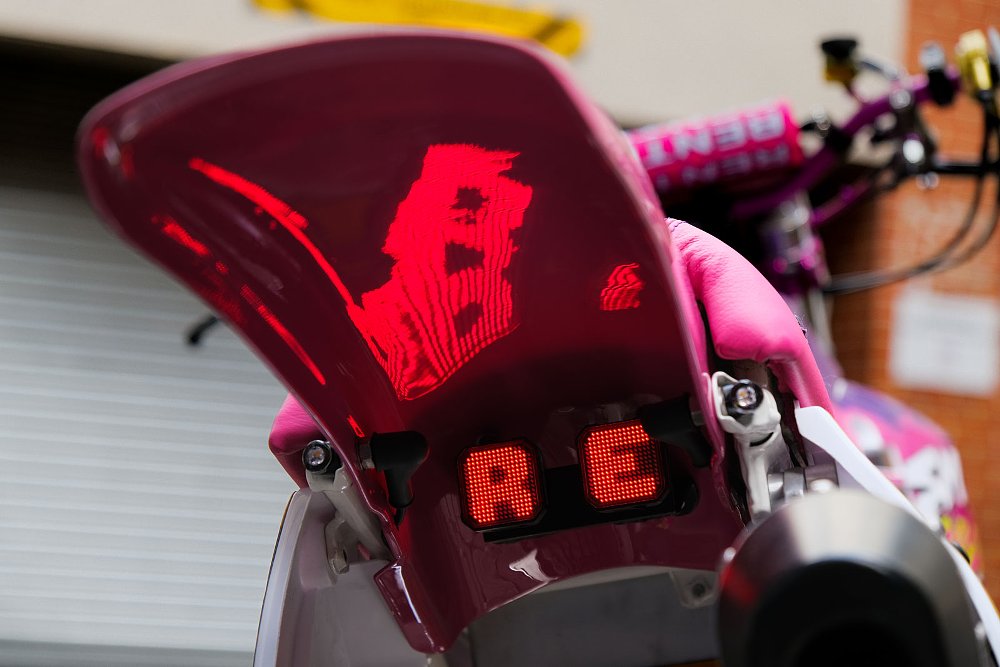
Starting at the pointy end of the bike, Matt retrofitted a Husqvarna fork he picked up at a swap meet. "I think they're the biggest right-way-up forks ever fitted to a production motocrosser," he says. Holding them in the frame are purple anodized XTrig CRF450 yokes. "The pink fork gaiters were essential," Matt jokes, despite having to pay almost as much to purchase and import them as the fork itself. Completing the front end overhaul is a Renthal MX Retro handlebar and pad in a theme-matching purple-and-pink colorway.
In the rear, things continue to get interesting with the transplanted subframe of a Yamaha YZ125. Beneath the subframe is a premium custom Öhlins shock, which Matt put together with a local specialist. At the base of the shock is an adjustable billet Steelheart Engineering swingarm that can shorten or lengthen the bike's footprint by up to six inches. "My mate, Gary Saunders Fabrication, did a lot of the fab, and between us we sussed out the suspension alignment. The lower linkage is from a Suzuki 750 SRAD World Superbike." In addition to those changes, Matt removed a large frame brace, which he replaced with crossmembers for the shock mount.
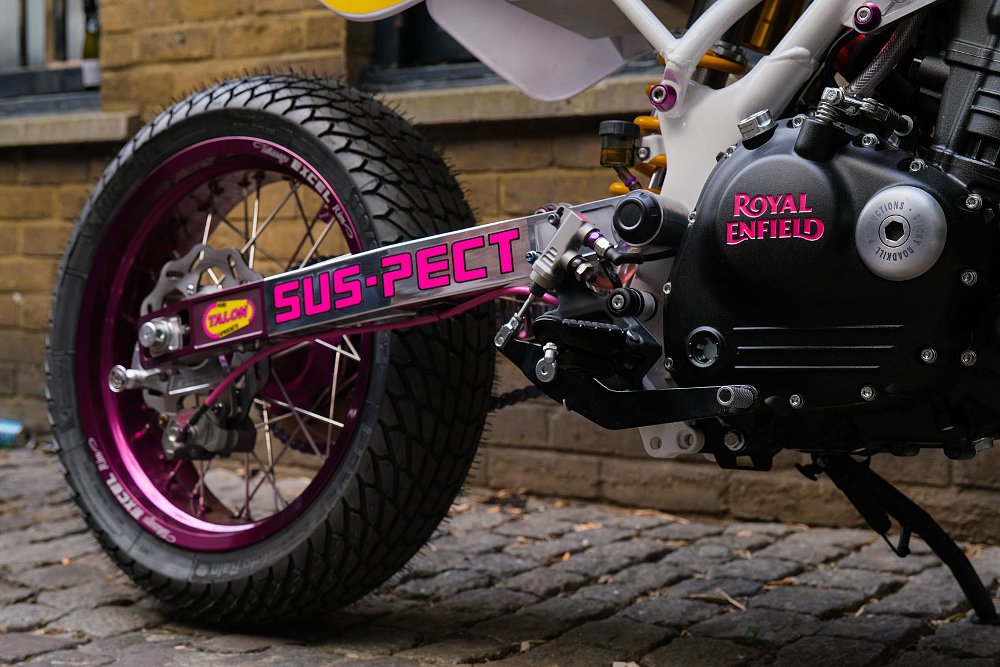
Completing the new handling package are Excel Takasago wheels and hubs wrapped in sticky Michelin rubber. And for ample stopping power, Matt teamed up with his go-to brake supplier HEL Performance. "They sent the calipers and master cylinders, but I painted the logos in pink myself."
While the 40 horsepower that the Guerilla 450 has from the factory may suit some, it wasn't enough for Matt. So, on the advice of Enfield's own flat track team, he fitted an IgniTech ECU and JenVey throttle body. Matt has also converted the throttle on this bike to a cable setup rather than ride-by-wire, did away with the ABS, and added a custom wiring loom by Gareth at Williams Motorsport Development. The exhaust is, of course, new too, and it's another of Matt's bespoke creations. To keep costs down, he salvaged the tube stock from a Harris paddock stand he had lying about.
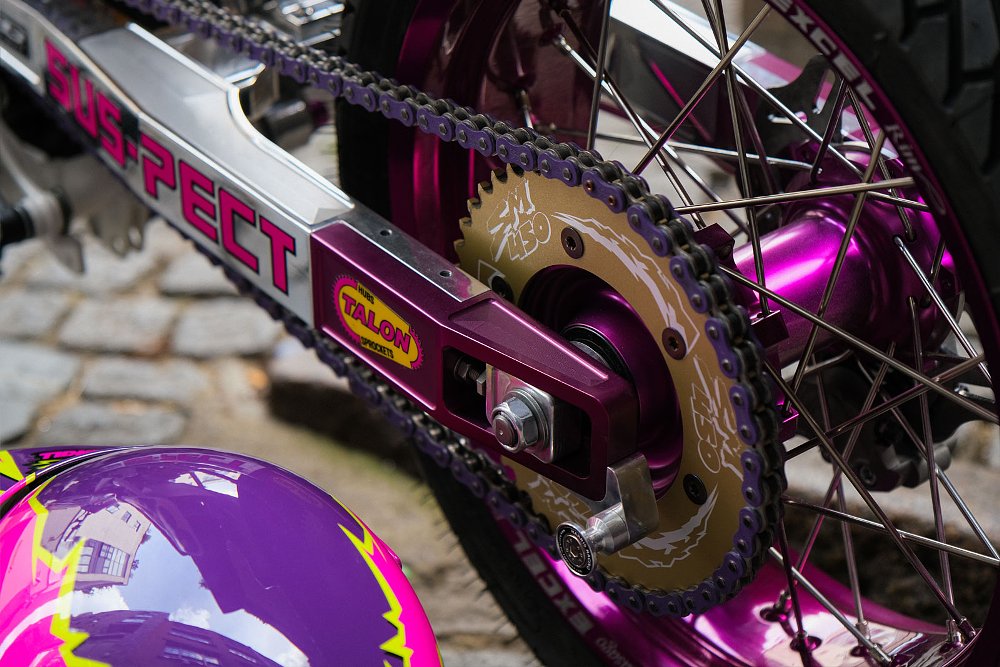
Tuning a modern bike can be challenging, to say the least, but luckily for Matt, the Royal Enfield Tech Centre is only a couple of hours' drive from his workshop. So, working alongside Enfield's tech staff, the bike was painstakingly tuned on their dyno to get the most out of the new setup.
For the Guerrilla's new look, Matt found the plastic tank from an 1987 YZ250 on eBay, which he promptly cut into quarters. After mocking up a new version using the cut pieces and bits of wood, he tasked fabricator Graham Johns, aka Coba Valley Cycles, with recreating it in aluminum. Matt also managed to source a bunch of other YZ parts, such as fenders and side panels, to complement the tank. An Acerbis Elba headlight assembly completes the package.

With everything sitting as it should on the Guerilla chassis, it was time for Ryan Roadkill to work his magic. Using Matt's favorite pink-and-purple colorway as a guide, Ryan designed the paint scheme, decals, and a matching Bell Moto 3 helmet in a style that perfectly suited their "early-'90s Supermoto" theme. "My favorite thing about the whole bike is the way the graphics run from the rad scoops to the tank to the seat," Matt says. "It starts as a vinyl graphic, then it's painted on the tank, and finally leather on the seat."
After its completion, Royal Enfield took Matt's Super Moto 450 to the 2025 Wheels & Waves festival in Biarritz, France. The bike turned plenty of heads at the brand's display booth and also competed in the event's iconic Punks Peak Hill Climb. Although it didn't take first place, Matt's hard work was profoundly validated when rider Jake Edey crossed the finish line performing a one-handed wheelie, much to the pleasure of the cheering crowd.




